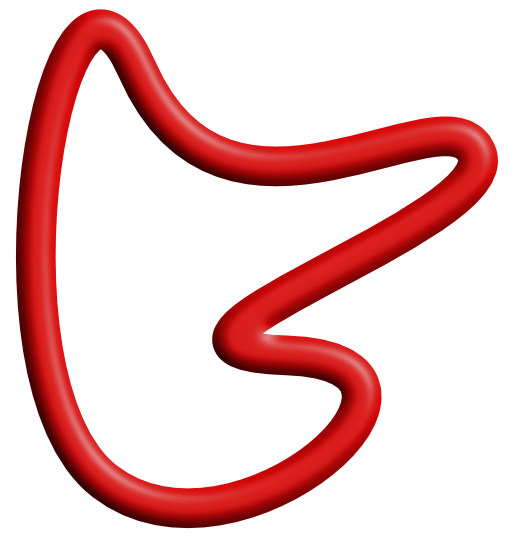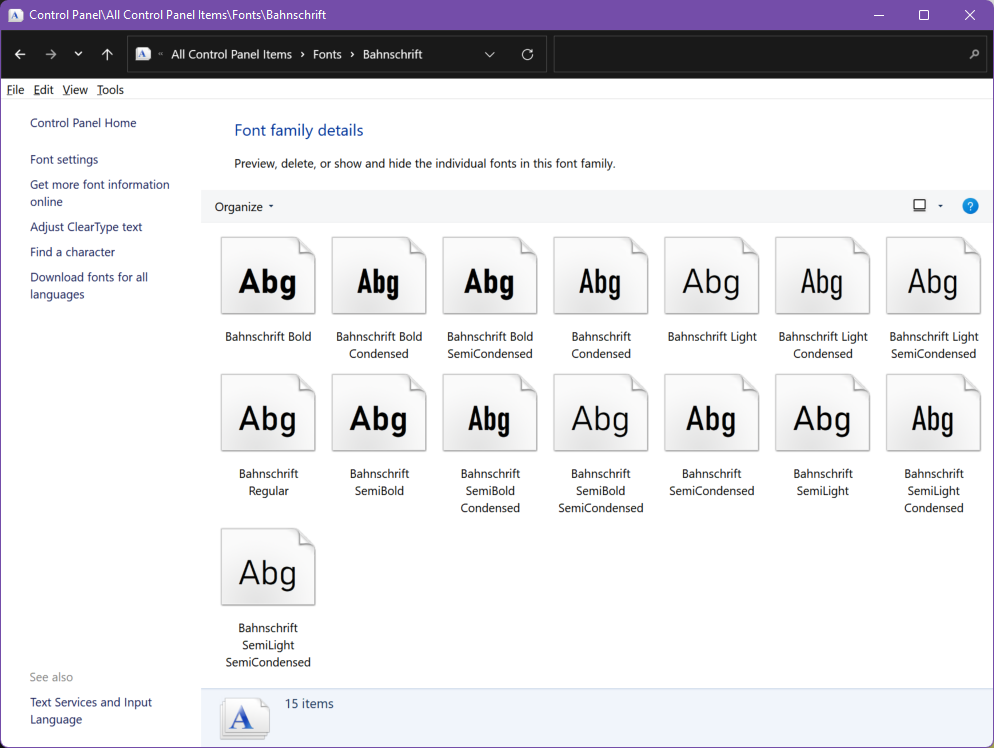
casterle
Members-
Posts
512 -
Joined
-
Last visited
Everything posted by casterle
-
When you posted this, it seemed a good explanation. Now that I've played a bit I believe something is broken in the implementation regardless of the developer's intent. If you open the attached project, on the Layers Panel you'll see a curve. Open the FX dialog and toggle the 3D effect off - the solid yellow fill is actually a gradient! Toggle it back on again and the gradient is replaced with a yellow fill. If you zoom in on the transition between shape and fill, you'll see a brownish outline around the edge of the fill. I believe this is the entire gradient collapsed into this small area, with the rest being filled solidly with the gradient's starting color. If this is a 'real world' effect, it's from no world of which I am aware 😊. Now, it could be that I've just done something wrong - I'm not very experienced in AD and there are a LOT of settings - and I hope that's it. If not, Houston, we've got a problem! Filled Shape Issue.afdesign
-
Sorry, although I found this issue in the release version of AD, I checked it in the beta version before posting here. Although this is mentioned in the original thread, I should have made it clear in my description. I try to always check a suspected bug in the beta version so I don't post something that's been resolved.
-
That's an interesting point I hadn't considered, and I'm sure many (most?) find it useful and natural. It's just not what I was going for. I'd sure like to be able to turn it off - as you can see in the thread referenced in the original post, it takes a lot of hoop-jumping to avoid this (in the case of what I'm trying to do) undesirable effect. Meanwhile, it appears JimmyJack has posted a most interesting suggestion in the aforementioned thread. A side-effect of that topic was some creative thinking that lead to at least one useable work-around and furthered my knowledge of this fine product.
-
I started this topic in the desktop forum, but think I've found a bug. Basically the problem involves clipping a gradient to a shape with effects. When the gradient is displayed, the effects applied to the shape change. I believe there should be no visible interaction between the clipping object and the clipped object. Here's the thread with examples and work-arounds:
-
Yes, that's the 'selection box' method I mentioned in my previous message. Perhaps I'm just clumsy (ok, I'm definitely clumsy) but after I select the layers via the layer panel (so I can select notes on multiple layers at once) and make an adjustment, I often do something that deselects the layers. Reselecting the layers before selecting another node is an extra step I'd like to avoid. If this is the only way to do this now, that's fine because it's not the real issue (which is the interaction between shape effects and clipped content). Since I find the same problem in the beta version, I've opened a thread in the beta forum.
-
Thank you! My last remaining question is in regards to selecting nodes for both curves at the same time, which I haven't figured out. If I select both curves at once in the layers panel, then move a node, only the curve I selected last moves with the node. LATER: I found a method that works. After selecting both curves, I have to drag a selection box around the node of interest. Once I've done that, all works as described. Is this the best way to do this? Is there a setting that would allow underlying nodes on all selected layers to move together without using a selection box? I think this is a bug. When I clip something inside something else, neither the clipped layer nor the layer to which it is clipped should affect the appearance of the other. I just checked the latest beta; the problem persists.
-
As I mentioned earlier, Bruce's method reverses the problem; the shape doesn't affect the gradient, but now the gradient affects the shape! You can see this effect in the images I posted above - compare the FX on the shape with and without the gradient enabled. I don't think this should happen - the shape should ignore its contents rather than being affected by them.
-
Thanks. This reverses the effect I was trying to avoid - the gradient is editable and looks fine, but it affects the FX on the shape. The gradient affects only the FX applied to the inside edge/portion of the shape - the FX on the outside portion/edge don't appear to be affected. I'm not sure why this happens - a bug perhaps?
-
Thank you - that works a treat! One problem with this technique - although I can scale the group once I've created it with perfect results, I can't edit the gradient in place as I hoped to do. Of course I've got the full copy of the gradient within the group, and I've tested editing this gradient, deleting the 'shaped' gradient and re-dividing and this works. Is there another way to accomplish this with a directly editable gradient? Although I've owned the Affinity Trio for some time, I've mostly worked with AP and done very little in AD. I've got to say that although I'm not a designer, I love this program! Thank you, Affinity (or Serif I suppose), for giving common folks like me the ability to OWN high quality tools at a very affordable price.
-
I've created a closed curve with the pen tool. I've applied a 3D effect. All good so far. Now I want to clip a gradient to the shape. For some reason, the effect seems to be applied to the clipped gradient distorting its color: How can I keep the effects applied to the curve from affecting the gradient? Thanks!
-
Color matching problems
casterle replied to casterle's topic in Pre-V2 Archive of Desktop Questions (macOS and Windows)
That's a great suggestion! -
Color matching problems
casterle replied to casterle's topic in Pre-V2 Archive of Desktop Questions (macOS and Windows)
Thanks for the info. Exporting to PDF lightened the colors up a tad, but they're still too reddish-brown. I'll try creating the document as RGB and see what happens. -
Windows 11, latest release versions of the Affinity products. Let me preface this by saying that although I've been using Affinity products for some time, I've never tried to print anything and am struggling to get what I see on my screen onto paper. Here's what I've done... In AD, I created a CMYK/8 document at 600 DPI (as that is my printer's native resolution). I'm printing to a Canon MF630 color laser printer, using the latest printer drivers w/correct profile selected. I printed to standard office paper and chose U. S. Sheetfed Uncoated V2 as the profile. The document is a proposed logo for our church, attached (I am in no way a designer and make no claim as to the quality of the design). I've tried printing using all four Rendering Intents, and I printed each using Color Handling by the printer as well as by Designer. I didn't see much (if any) difference amongst the results. The printed images are not only too dark, but I see too much red & even brown in the gradient. Have I configured something incorrectly in the document? Could I improve things if I used a better/different paper? I've spent many hours & wasted too much paper and ink trying to figure this out on my own, so I turn to the experts for assistance. Scaled Logo.afdesign
-
@LibreTraining, @walt.farrell Thanks for clarifying. I didn't know the GF fonts offered a choice between installing static and variable fonts. I don't recall being given a choice as to which to install, but I wasn't looking for one either. At any rate, I can reinstall the fonts as static and have them work in AD.
-
I was afraid that was the case. I ended up using a free online converter (https://www.pngtosvg.com/) to convert the image to SVG, then loaded the SVG into AD and edited away the bits I didn't want. BTW, I tried several online converters - the one I mentioned is the only one that did the job adequately.
-
As the title suggests, I'd like to automatically create strokes (or shapes) on a vector layer based on a color or range of colors visible on layers below. Specifically, I've got an image layer displaying a map with lakes and rivers. I'd like to use the blue colors to create the strokes. I've also got all 3 apps, so if I can use Photo or Pub to accomplish this I've got them as well.
-
Some people have a disability detecting colours
casterle replied to William Overington's topic in Resources
Not being a designer myself, or having a natural sense of color, I find color wheels (which is what you saw at the 'Color Combinations' link) useful. They help you pick color combinations that work together; if the info at that site isn't sufficient, Google 'color wheels'. -
Latest AD on Win11. At least one font is missing its styles in AD. Bahnschrift has many styles as illustrated by the Fonts panel: AD, on the other hand, shows this: And the labels aren't kidding - they're all the same style! I tested these fonts in a Word document, and they work as advertised. Suggestions?








